Gluten-Free Pasta Recipes & How to Make Homemade Gluten-Free Pasta Perfectly
Discover over 20 gluten free pasta recipes, plus step-by-step tips for cooking, storage, sauces, and homemade gluten-free pasta dough. Delicious, easy, and U.S.-friendly.
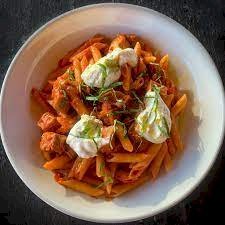
Gluten free pasta recipes open up countless possibilities, from creamy comfort food to fresh seasonal dishes. Whether you’re looking for fast weeknight options, plant-based meals, or homemade pasta you can roll and cut yourself, these recipes make it easy to enjoy pasta without gluten while keeping flavor and variety on the table.
Enjoying pasta on a gluten-free diet can sometimes be challenging, as achieving the same taste and texture as traditional wheat pasta requires a thoughtful approach. With the right ingredients and a few reliable cooking techniques, however, it’s entirely possible to create creamy mac and cheese, hearty lasagna, and even homemade noodles that rival the classics. This guide covers more than twenty gluten-free pasta recipes, complete with step-by-step cooking advice, expert tips, and instructions for making your own pasta dough at home.
Why Gluten Free Pasta Recipes Matter
Image source: encrypted-tbn0.gstatic.com
Living gluten-free isn’t just a passing trend in America—it’s a necessity for millions of people. For those with celiac disease, consuming gluten can trigger serious autoimmune reactions that damage the small intestine. Others may experience non-celiac gluten sensitivity or wheat intolerance, leading to uncomfortable symptoms like bloating, fatigue, or digestive distress.
Pasta, long considered one of the ultimate comfort foods, can be especially difficult to give up. That’s why gluten-free pasta recipes are so valuable—they let everyone enjoy the warmth and satisfaction of a hearty bowl of pasta without the worry.
According to the Celiac Disease Foundation, avoiding gluten not only prevents health complications in people with celiac disease but can also help those with gluten sensitivity feel lighter and experience fewer digestive issues. This means gluten-free pasta recipes don’t just serve medical needs—they appeal to a broad audience seeking both wellness and delicious, inclusive meals for the whole family.
Read More: Pairing gluten-free meals with nutrient-rich ingredients can benefit not just digestion but also skin health—discover more in our article on Healthy Foods for Glowing Skin: Nutrient-Packed Choices to Eat Now.
Types of Gluten-Free Pasta Available in the U.S.
Image source: encrypted-tbn0.gstatic.com
In most American grocery stores, you’ll now find an impressive variety of gluten-free pasta options, each with its own taste and nutritional profile. Rice pasta is one of the most budget-friendly choices. It has a mild flavor and a soft texture, making it a gentle option for sensitive stomachs and an easy transition for those new to gluten-free eating. Corn pasta offers a slightly sweet, hearty taste that holds up well in baked dishes. Chickpea and lentil pastas stand out for their higher protein and fiber content, which can make meals more filling and nutritious. For those seeking extra nutrients, quinoa pasta or quinoa blends provide a good balance of protein, fiber, and minerals while still delivering a classic pasta feel.
Understanding these differences helps you pick the best pasta for your dish—whether you’re preparing a light, creamy meal, a protein-packed dinner, or a hearty baked casserole.
How to Cook Gluten-Free Pasta the Right Way
Image source: encrypted-tbn0.gstatic.com
Cooking gluten-free pasta isn’t exactly the same as cooking traditional wheat pasta, but with a few simple adjustments, you can achieve delicious, firm, and flavorful results every time.
1. Watch the Cooking Time Closely
Gluten-free noodles tend to cook faster than wheat pasta. Always check the package directions, but start tasting the pasta 1–2 minutes before the suggested time to avoid overcooking.
2. Use Plenty of Water
Fill a large pot with at least 4 quarts of water per pound of pasta. A generous amount of water helps the noodles move freely and prevents clumping.
3. Stir Frequently
Because gluten-free pasta releases more starch, it’s more prone to sticking. Stir several times during cooking to keep the pieces separate.
4. Aim for Al Dente
Cook just until the pasta is tender with a slight bite. Overcooked gluten-free pasta can become mushy quickly.
5. Rinse Briefly (Optional but Helpful)
After draining, a quick rinse with cool water helps stop the cooking process and removes excess starch that can cause gumminess.
6. Add a Touch of Olive Oil
Tossing the drained pasta with a teaspoon of olive oil helps keep the noodles from sticking together—especially useful if you’re not serving them immediately.
7. Adjust for Baked Dishes
If you plan to use the pasta in a casserole or baked dish, undercook it slightly so it finishes cooking in the oven without turning soft or mushy.
Pro Tip: Gluten-free pasta is best served right after cooking, as it can harden when left to sit. If you need to reheat, add a splash of hot water or broth to restore its texture.
With these techniques, your gluten-free pasta dishes will taste fresh, hold their shape, and feel like something straight from a restaurant kitchen.
Homemade Gluten-Free Pasta Dough
Image source: encrypted-tbn0.gstatic.com
Making pasta from scratch might sound intimidating, but it’s both achievable and incredibly rewarding—especially when you go the gluten-free route. With just a few ingredients, you can create pasta that’s fresh, flavorful, and tailored to your needs.
A reliable recipe usually starts with a gluten-free flour blend, eggs, a drizzle of olive oil, and a small amount of xanthan gum (to give the dough elasticity and help it hold together, since gluten is absent). After mixing, the dough can be rolled out thinly and cut into classic shapes like spaghetti or fettuccine, or even used to make stuffed pastas like ravioli.
One of the biggest advantages of homemade pasta is how quickly it cooks—usually in just 2–4 minutes. The result is tender, silky noodles that absorb sauces beautifully, making them ideal for everything from a simple tomato basil sauce to creamy Alfredo or hearty ragù.
If you enjoy experimenting in the kitchen, making gluten-free pasta can easily become a weekend tradition. You can even customize it by incorporating herbs into the dough, trying different flour blends (like rice, quinoa, or chickpea flour), or adjusting the texture to suit your favorite pasta dishes.
Classic Gluten-Free Mac and Cheese
Image source: encrypted-tbn0.gstatic.com
Few comfort foods rival the warm, creamy goodness of mac and cheese—and the best part is, you don’t have to give it up if you’re avoiding gluten. A gluten-free version is just as satisfying when made with the right ingredients. Start by choosing a sturdy pasta shape, such as elbows or shells, that holds up well to sauces. For the cheese sauce, swap out traditional flour for cornstarch (or even arrowroot powder) to thicken it smoothly without gluten. A blend of sharp cheddar and a touch of Parmesan adds depth of flavor, while a crispy topping made with gluten-free breadcrumbs or crushed rice crackers gives it that irresistible crunch.
Not only is this dish easy to make, but it’s also family-friendly—kids love the creamy texture, and adults appreciate the nostalgic comfort. Whether served as a weeknight dinner or a hearty side for gatherings, gluten-free mac and cheese proves that you can still enjoy classic American comfort food without compromise.
Hearty Gluten-Free Lasagna
Image source: encrypted-tbn0.gstatic.com
Lasagna is one of those comfort foods many people think they’ll have to give up when going gluten-free — but that’s no longer the case. Today, most supermarkets carry wide gluten-free lasagna sheets made from rice, corn, or a blend of alternative flours. These options cook up beautifully and hold their shape, making them a perfect substitute for traditional pasta.
To build a hearty gluten-free lasagna, layer the cooked pasta sheets with rich marinara sauce, creamy ricotta, gooey mozzarella, and your choice of seasoned ground beef, chicken, or roasted vegetables. For the best results, parboil the gluten-free pasta sheets briefly before layering. This step helps them bake evenly and prevents a chewy texture.
Once baked to golden perfection, a tray of this lasagna not only makes family dinners feel special but also proves how versatile gluten-free pasta recipes can be. Pair it with a simple green salad and garlic bread made from gluten-free baguettes for a complete Italian-inspired meal.
One-Pot Gluten-Free Pasta Dinners
Image source: encrypted-tbn0.gstatic.com
Busy weeknights call for simple, satisfying meals — and one-pot pasta recipes deliver just that. By cooking the pasta, vegetables, protein, and sauce all together, you save both time and dishes without losing flavor.
For gluten-free options, rotini or penne are excellent choices because they keep their shape well during cooking.
Recipe Idea:
-
In a large pot, bring 4 cups of chicken broth to a gentle boil.
-
Add 2 cups of gluten-free rotini and cook until almost tender (about 7–8 minutes, depending on the brand).
-
Stir in 1 cup of cooked, shredded chicken for protein and 2 cups of fresh spinach for a boost of greens.
-
Pour in a mixture of ½ cup light cream and 1 tablespoon lemon juice, which creates a silky, tangy sauce.
-
Simmer for 3–4 minutes until the spinach wilts and the sauce slightly thickens.
-
Season with salt, pepper, and a pinch of crushed red pepper (optional) for extra flavor.
Serve hot, straight from the pot. It’s fast, wholesome, and naturally gluten-free — proof that quick dinners don’t have to sacrifice taste or nutrition.
Read More: If you’re looking for more nourishing meal ideas, check out our guide on Healthy Asian Food Recipes: Nourishing & Flavorful Dishes Better Than Takeout for dishes that are both satisfying and packed with flavor.”
Vegan Gluten-Free Pasta Options
Image source: encrypted-tbn0.gstatic.com
For anyone avoiding both gluten and animal products, vegan pasta dishes are a delicious and nourishing choice. Today, there are plenty of gluten-free pasta options made from chickpeas, lentils, brown rice, or quinoa—each bringing its own flavor and nutrition benefits. Chickpea pasta, for example, pairs wonderfully with creamy cashew-based sauces, while lentil pasta offers extra protein to balance vegetable-rich meals. A classic dairy-free pesto made with fresh basil and nutritional yeast is perfect over gluten-free spaghetti, while a silky avocado sauce adds richness to penne.
What makes vegan, gluten-free pasta recipes so appealing is that they’re not only satisfying but also help support a balanced plant-based diet. They provide fiber, plant protein, and healthy fats while staying free of common allergens. Plus, with endless combinations of sauces, vegetables, and herbs, you’ll never run out of creative ways to enjoy them.
Mediterranean-Inspired Pasta Recipes
Image source: encrypted-tbn0.gstatic.com
Mediterranean flavors pair beautifully with gluten-free pasta, creating dishes that are both wholesome and satisfying. Imagine tender gluten-free fusilli tossed with sun-dried tomatoes, briny Kalamata olives, creamy feta, and a sprinkle of fresh basil or oregano. For something lighter, try a Greek-inspired pasta salad made with crisp cucumbers, colorful bell peppers, red onions, and a tangy lemon–olive oil dressing.
These recipes are naturally vibrant and refreshing, making them perfect for warm summer meals, family picnics, or potluck gatherings. Beyond their flavor, Mediterranean-style gluten-free pasta dishes are packed with nutrients from vegetables, healthy fats from olive oil, and protein from cheese or legumes. This balance makes them not only delicious but also nourishing, whether you’re following a gluten-free diet or simply craving a fresh, sunny meal.
Asian-Inspired Gluten-Free Pasta Recipes
Image source: encrypted-tbn0.gstatic.com
Asian cuisine offers a wide variety of gluten-free noodle options that are both delicious and versatile. Rice noodles, for instance, are naturally gluten-free and perfect for stir-fries, soups, and salads. A popular example is Pad Thai—a Thai classic made with tamarind-based sauce, crunchy vegetables, and your choice of chicken, shrimp, or tofu.
Another excellent option is soba noodles, but it’s important to note that not all soba is gluten-free. Many brands mix wheat flour with buckwheat, so if you’re avoiding gluten, look for packages labeled 100% buckwheat soba. These noodles pair beautifully with sesame, garlic, and soy-based sauces, creating a rich nutty flavor.
From Thai street food to Japanese comfort dishes, these recipes highlight how gluten-free pasta recipes can span cultures, bringing authentic flavors to your kitchen while keeping your meals safe, tasty, and nourishing.
Gluten-Free Pasta Salads
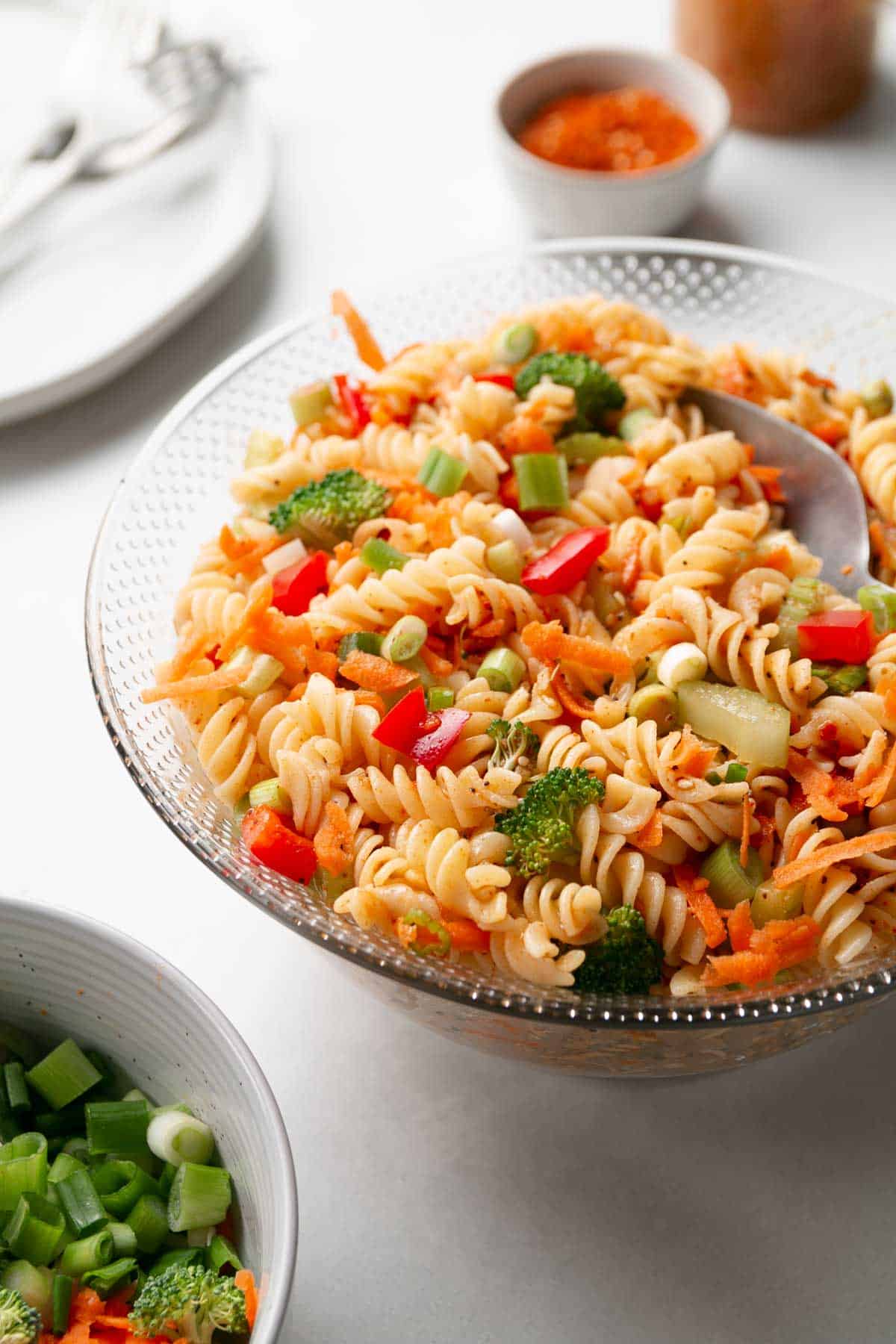
Image source: wheatbythewayside.com
Pasta salads are a classic staple at American cookouts, and the good news is they can easily be made gluten-free. Simply swap traditional pasta for a gluten-free option like rotini, penne, or fusilli as your base. From there, you can add colorful vegetables, fresh herbs, cheese, and a flavorful dressing to create a dish that’s both satisfying and crowd-pleasing.
For a refreshing twist, try a Mediterranean-inspired version with cherry tomatoes, mozzarella pearls, fresh basil, and a drizzle of balsamic vinaigrette. If you’re looking for something with a little kick, a Southwestern pasta salad with black beans, corn, bell peppers, and a zesty lime-cilantro dressing is always a hit.
The beauty of gluten-free pasta salads is their versatility—they work well for barbecues, parties, potlucks, or even as a light meal prep option for the week. With so many combinations to explore, they’re a delicious way to enjoy classic flavors without missing out on texture or taste.
High-Protein Gluten-Free Pasta Meals

Image source: i.pinimg.com
Many gluten-free pastas today are made from nutrient-rich legumes such as lentils, chickpeas, and edamame. These varieties not only deliver a satisfying texture and flavor but also provide a natural boost of plant-based protein and fiber. Compared to traditional wheat pasta, they help keep you fuller for longer and support steady energy levels.
For a balanced, protein-packed meal, try pairing legume-based pasta with lean proteins like grilled chicken, turkey, or fish. Vegetarians can easily create a hearty option by adding beans, tofu, or tempeh. To make the dish even more nutrient-dense, toss in colorful vegetables—such as spinach, zucchini, or bell peppers—and finish with a drizzle of olive oil or a sprinkle of seeds for healthy fats.
High-protein gluten-free pasta recipes are an excellent choice for athletes, busy professionals, or anyone who wants to enjoy comforting pasta dishes without relying on wheat. They’re versatile, easy to prepare, and perfect for anyone looking to combine great taste with balanced nutrition.
Gluten-Free Gnocchi

Image source: thebananadiaries.com
Gnocchi, those soft, pillowy dumplings from Italy, are a comforting dish that can easily be made gluten-free. Traditionally crafted from potatoes and flour, gluten-free versions swap out wheat flour for rice flour, chickpea flour, or a gluten-free flour blend without sacrificing texture or flavor.
These dumplings pair beautifully with a range of sauces—toss them in a simple marinara for a hearty meal, or try a brown butter and sage sauce for a rich, nutty twist. Best of all, gnocchi cook quickly; once they float to the surface of boiling water, they’re ready in just a few minutes.
If you’re short on time, many U.S. grocery stores now carry pre-made gluten-free gnocchi, making it easy to enjoy them at home. Whether homemade or store-bought, they prove that gluten-free pasta recipes go far beyond the usual spaghetti or penne, offering a unique, comforting option for weeknight dinners or special occasions.
Kid-Friendly Gluten-Free Pasta Dishes
Image source: encrypted-tbn0.gstatic.com
Many parents struggle to come up with meals that kids will actually enjoy when gluten is off the table. Fortunately, there are plenty of simple, family-friendly gluten-free pasta options that keep both taste and nutrition in mind. Classics like buttered noodles sprinkled with Parmesan, spaghetti topped with marinara, or a creamy baked mac and cheese made with gluten-free pasta are always kid-approved. Choosing fun shapes—such as bow ties, spirals, or shells—can also make mealtime more exciting and encourage picky eaters to dig in.
The key is keeping flavors familiar while swapping in quality gluten-free pasta made from rice, corn, or chickpeas. Not only does this make the transition easier for kids, but it also ensures the meals are quick, comforting, and nourishing—perfect for busy weeknights. With a little creativity, these gluten-free recipes can quickly become go-to favorites for the whole family.
Budget-Friendly Gluten-Free Pasta Cooking
Image source: encrypted-tbn0.gstatic.com
Eating gluten-free doesn’t have to break the bank. Pasta meals are an easy, affordable option when you know what to buy. Store-brand rice, corn, or even lentil pasta often cost less than specialty gluten-free blends, and they’re just as satisfying. Pairing them with budget-friendly pantry staples—like canned tomatoes, beans, herbs, and frozen vegetables—keeps costs low while still packing in flavor and nutrition. Cooking larger batches, such as pasta salads or baked pasta dishes, is another smart way to stretch your grocery budget since they store well for leftovers. With a little planning and creativity, gluten-free pasta recipes can be both cost-effective and delicious.
Gluten-Free Pasta Baking Dishes

Image source: www.eastewart.com
Casseroles and baked pasta dishes are beloved comfort foods in many U.S. households. For those eating gluten-free, options like baked ziti, stuffed shells, or vegetable-packed pasta bakes can be just as satisfying. The key is selecting pasta varieties that hold their shape during baking—such as brown rice, corn, or quinoa blends—since some gluten-free noodles can turn mushy. Many brands now offer oven-ready gluten-free lasagna sheets and sturdy penne, making it easier than ever to enjoy these classics. Best of all, these dishes can be prepared ahead of time and reheated, proving that gluten-free pasta recipes can be just as convenient, hearty, and family-friendly as traditional versions.
Also check: If you enjoy exploring global cuisines, don’t miss our guide on Russian Food Recipes Desserts Edition: Cakes, Pastries & Sweets to Try in 2025, where we highlight traditional and modern sweets worth adding to your table.
Regional American Twists on Pasta

Image source: i.pinimg.com
Different regions of the U.S. put their own unique spin on pasta, often blending Italian traditions with local ingredients and tastes. In the South, Cajun-inspired pasta dishes—often with shrimp, smoky sausage, and a kick of spice—are a comforting favorite. In the Midwest, hearty baked pasta casseroles layered with cheese and creamy sauces are a staple at potlucks and family gatherings. On the West Coast, lighter versions shine, with fresh vegetables, herbs, and even avocado making regular appearances.
By swapping in gluten-free noodles, these regional specialties remain accessible to everyone without sacrificing flavor. Whether it’s bold Southern spices, Midwest comfort, or California freshness, adding local twists not only keeps gluten-free pasta recipes delicious but also makes them feel familiar, fun, and rooted in community traditions.
Pairing Sauces with Gluten-Free Pasta
Image source: encrypted-tbn0.gstatic.com
The sauce can truly make or break a pasta dish. While classics like marinara and Alfredo never go out of style, gluten-free eaters can enjoy just as much variety with flavorful options such as basil pesto, rich vodka sauce, or a velvety mushroom cream. The key is pairing the right sauce with the right pasta shape: hearty, chunky sauces cling beautifully to sturdy cuts like penne, rigatoni, or fusilli, while lighter olive oil–based or wine-infused sauces complement long strands like spaghetti or linguine. By matching texture and flavor thoughtfully, your gluten-free pasta recipes won’t just be balanced—they’ll taste restaurant-worthy every time.
Storing Gluten-Free Pasta the Right Way
Image source: encrypted-tbn0.gstatic.com
Gluten-free pasta tends to dry out or stick together more easily than traditional wheat pasta, especially once cooled. To keep leftovers fresh and manageable:
-
Prevent Clumping: After cooking, lightly toss the noodles with a drizzle of olive oil before refrigerating. This creates a protective coating that stops them from sticking.
-
Reheating Tip: When warming up leftovers, add a splash of water, broth, or your favorite sauce to the pan. This restores moisture and prevents the pasta from becoming tough.
-
Freezer-Friendly Option: If you want to make meals ahead, gluten-free pasta freezes best when mixed with sauce (rather than plain). The sauce helps maintain texture and flavor during freezing and thawing.
-
Meal Prep Advantage: By using these storage tricks, you can confidently prepare gluten-free pasta dishes in advance, making busy weeknights easier without sacrificing taste or texture.
Is Gluten-Free Pasta Healthy?
Image source: encrypted-tbn0.gstatic.com
While gluten-free pasta is sometimes lower in fiber than traditional whole wheat varieties, newer blends have closed much of that nutritional gap. Many brands now fortify their gluten-free options with added protein and fiber, making them more filling and balanced.
Legume-based pastas—such as chickpea or lentil—stand out nutritionally. They are naturally rich in plant-based protein, fiber, and micronutrients like iron and magnesium. This makes them a smart choice not just for those avoiding gluten but also for anyone looking to boost protein intake without relying on meat.
For people with celiac disease or gluten sensitivity, the benefit is clear: enjoying pasta without the discomfort of digestive issues. But even beyond medical necessity, gluten-free pasta can fit seamlessly into a healthy lifestyle. When paired with colorful vegetables, healthy fats, and lean proteins, it becomes part of a balanced, nutrient-dense meal.
Tip: Always check the nutrition label—protein and fiber content can vary significantly across brands. For instance, legume-based pastas often deliver double or even triple the protein per serving compared to rice-based varieties.
Average Monthly Cost of Gluten-Free Pasta in the U.S. (2025)
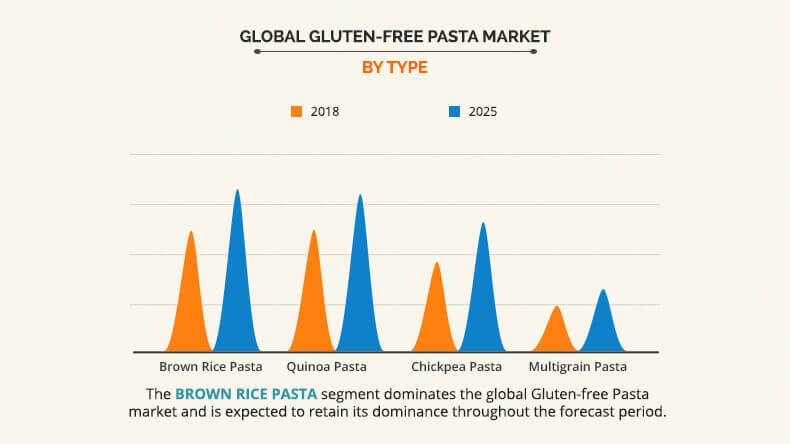
Image source: www.alliedmarketresearch.com
| Type of Pasta | Average Price per Pound | Estimated Monthly Spend (Family of 4) |
|---|---|---|
| Rice Pasta | $2.50 | $20–25 |
| Corn Pasta | $3.00 | $25–30 |
| Chickpea/Lentil Pasta | $4.50 | $35–40 |
| Quinoa Blends | $5.00 | $40–45 |
Source: U.S. Grocery Retail Reports, 2024–2025 (estimated averages)
Key Takeaways
-
Health Benefits: Gluten-free pasta can be a healthy choice, especially when opting for legume-based varieties that naturally contain more protein and fiber.
-
Cost Factor: Expect to pay slightly more compared to regular pasta. Families can budget around $20–45 per month, depending on the type chosen.
-
Smart Pairings: To maximize nutrition, pair gluten-free pasta with vegetables, olive oil, lean meats, or plant-based proteins for a complete meal.
Ingredient Substitution Guide for Gluten-Free Pasta
Image source: encrypted-tbn0.gstatic.com
When making pasta at home, the ingredients you choose determine whether the dish turns out tender, chewy, or crumbly. This is especially true for gluten-free pasta, where different flours behave in unique ways.
-
Rice flour creates a light and mild-tasting pasta, ideal for delicate sauces but slightly more fragile.
-
Almond flour adds a subtle nutty flavor along with extra protein and healthy fats, though it often needs a binder to prevent breaking.
-
Cassava flour comes closest to wheat in texture, giving the dough elasticity and chew, making it a favorite for homemade gluten-free pasta.
Equally important are binders, which replace the gluten structure that usually holds pasta together:
-
Xanthan gum provides stretch and elasticity.
-
Psyllium husk adds chewiness and helps the dough hold moisture.
-
Chia seed gel or flaxseed gel act as natural, plant-based alternatives, creating a slightly earthy flavor while improving binding.
For beginners, the simplest way to start is by using a gluten-free flour blend specifically formulated for pasta or baking. These blends are pre-balanced with starches and binders, helping you avoid trial-and-error while still delivering consistent, delicious results.
Pro tip: Always let gluten-free dough rest for 15–30 minutes before rolling. This allows the flours to fully hydrate and the binders to activate, resulting in smoother, more workable pasta.
Comparison with Regular Pasta
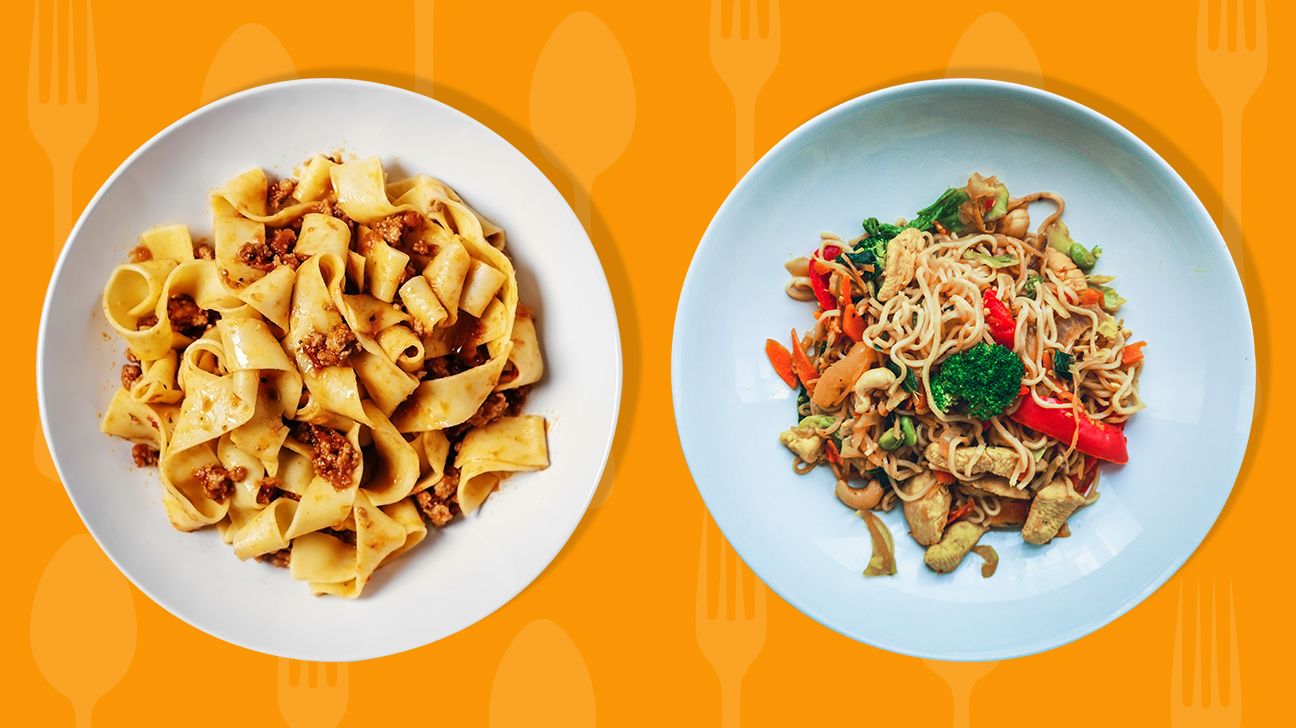
Image source: media.post.rvohealth.io
When comparing gluten-free pasta to traditional wheat pasta, the experience can differ in both flavor and nutrition. Wheat pasta has a neutral, slightly nutty taste that many people are familiar with. Gluten-free alternatives vary more:
-
Corn pasta often carries a mild sweetness.
-
Chickpea and lentil pasta bring hearty, nutty, and earthy notes.
-
Rice pasta is typically mild and absorbs the flavor of sauces well.
From a nutritional standpoint, wheat pasta is naturally higher in protein and fiber. However, many brands of gluten-free pasta now fortify their products or use protein-rich ingredients (like quinoa, lentils, or chickpeas) to help close the gap. Taste and texture have also improved over the years—modern gluten-free pastas, especially those made with blends of corn, rice, or legumes, are frequently reviewed by U.S. consumers as being very close in texture to wheat pasta, particularly when served with robust sauces.
Nutritional Comparison: Gluten-Free vs. Regular Pasta (Per Cup, Cooked)
| Nutrient | Gluten-Free Pasta (Rice-Based) | Regular Wheat Pasta |
|---|---|---|
| Calories | 190 | 200 |
| Protein | 4 g | 7 g |
| Fiber | 1 g | 3 g |
| Iron | 4% DV | 10% DV |
Source: USDA FoodData Central, 2024
Key Takeaway
If you follow a gluten-free diet, you don’t have to miss out on pasta. While rice-based versions are lower in protein and fiber, other gluten-free options made from chickpeas, lentils, or quinoa provide more balanced nutrition and can rival wheat pasta in taste and satisfaction. Choosing the right type depends on both your dietary needs and your flavor preferences.
Tools & Equipment for Homemade Gluten-Free Pasta
Image source: encrypted-tbn0.gstatic.com
Making homemade pasta is surprisingly simple when you have the right tools on hand. A pasta roller helps you create thin, even sheets of dough, which is essential for lasagna, ravioli, and delicate noodles. Pasta cutters make shaping fettuccine, tagliatelle, or pappardelle quick and consistent, saving you the trouble of cutting each strand by hand. To prevent freshly cut pasta from sticking, a drying rack is invaluable—it allows air to circulate so strands dry evenly.
If you enjoy filled pasta, such as ravioli or tortellini, a ravioli press or mold ensures uniform pockets and seals them tightly, preventing filling from spilling out during cooking. However, you don’t need to invest in every gadget at once. On a budget, you can achieve great results with a rolling pin and sharp knife—they take more time and effort but still get the job done.
For those making gluten-free pasta, the right equipment can make the process much smoother. Gluten-free dough is often more delicate and less elastic than traditional pasta, so a roller, cutter, and mold can help reduce tearing and improve consistency.
In short, investing in a few reliable tools not only makes pasta-making easier but also elevates the overall experience—turning it from a chore into a fun, rewarding kitchen project.
Trusted Gluten-Free Pasta Brands in the U.S.

Image source: i0.wp.com
If you’d prefer to buy gluten-free pasta rather than make it from scratch, you’ll find plenty of excellent options on store shelves nationwide. Barilla has become a go-to brand for budget-friendly gluten-free pasta, offering classics like spaghetti, penne, and rotini made with a blend of corn and rice. Jovial Foods specializes in organic, artisan-style pasta crafted in Italy from brown rice, prized for its authentic flavor and firm texture. For a protein-packed alternative, Banza creates pasta from chickpeas, making it higher in fiber and protein than traditional varieties—perfect for health-conscious eaters. For those who enjoy rice-based noodles, Tinkyada has long been a staple in gluten-free kitchens, known for its consistency and versatility in hot or cold dishes.
These brands make it easy to prepare gluten-free meals without sacrificing taste or texture. In fact, Barilla and Jovial consistently earn high marks in U.S. taste tests and shopper reviews for their ability to mimic the chew and flavor of traditional wheat pasta, making them favorites among both gluten-free and mainstream households.
Celebrate Every Season with Fresh Gluten-Free Pasta Recipes
Image source: encrypted-tbn0.gstatic.com
Incorporating seasonal ingredients into pasta dishes keeps your meals exciting, flavorful, and perfectly suited to the time of year.
-
Summer: Light and refreshing cold pasta salads shine with juicy tomatoes, crisp cucumbers, and fragrant basil. A drizzle of olive oil and a touch of lemon juice make them even more vibrant.
-
Fall: Creamy pumpkin Alfredo or pasta tossed with roasted butternut squash brings warmth and comfort, while earthy herbs like sage and thyme deepen the flavors.
-
Winter: Hearty baked ziti, lasagna layered with rich sauces, or sausage pasta casseroles create cozy, satisfying dinners that are perfect for cold evenings.
-
Spring: Bright dishes like lemon asparagus pasta highlight fresh, tender vegetables and pair beautifully with lighter sauces.
By rotating your gluten-free pasta recipes with the seasons, you not only enjoy fresher flavors but also keep your meals varied and exciting throughout the year.
Gluten-Free Pasta for Special Diets
Image source: encrypted-tbn0.gstatic.com
Beyond simply avoiding gluten, many people choose pasta alternatives that align with their broader dietary preferences. For those following a keto lifestyle, low-carb swaps like zucchini noodles (“zoodles”), spaghetti squash strands, or hearts of palm pasta make satisfying substitutes without spiking carbs. Paleo eaters often prefer grain-free options such as cassava flour pasta or spiralized vegetables, which stay true to the diet’s principles. Meanwhile, people who are tracking macros or focusing on muscle-building can benefit from high-protein choices like lentil, chickpea, or edamame pasta, which offer both fiber and protein in each serving.
By exploring these diverse alternatives, gluten-free pasta dishes can easily fit into nearly any eating plan—whether the goal is weight management, improved digestion, or higher protein intake—making them more inclusive and versatile for different lifestyles.
Making gluten-free pasta at home is easier than you think! With just a few simple ingredients, you can enjoy fresh, tender pasta that rivals the traditional version.
Ingredients
-
2 cups gluten-free flour blend (make sure it contains rice flour, tapioca, or potato starch for best texture)
-
3 large eggs
-
1 tbsp olive oil
-
1 tsp xanthan gum (skip if your flour blend already includes it)
-
½ tsp salt
Instructions
-
Mix the dry ingredients: In a large bowl, whisk together the flour, xanthan gum, and salt.
-
Add the wet ingredients: Make a well in the center, add the eggs and olive oil, then mix until a dough starts to form.
-
Knead the dough: Transfer to a lightly floured surface and knead for 5–7 minutes until smooth and elastic. (If too dry, add a teaspoon of water at a time; if too sticky, dust with flour.)
-
Roll it out: Using a rolling pin or pasta machine, roll the dough thin and cut into your favorite shapes—fettuccine, tagliatelle, or even lasagna sheets.
-
Cook the pasta: Bring a pot of salted water to a boil. Add the pasta and cook for 2–3 minutes, or until it floats to the surface and is tender.
-
Serve and enjoy: Toss immediately with your favorite sauce, from a simple garlic butter to a rich marinara.
Tips for Success
-
If your dough cracks while rolling, let it rest for 10–15 minutes under a damp towel.
-
Fresh pasta cooks much faster than dried pasta—so keep an eye on it.
-
For extra flavor, try adding herbs like basil or oregano directly into the dough.
If you’re also looking to boost your overall wellness beyond the dinner table, check out our guide on Healthy Foods for Glowing Skin: Nutrient-Packed Choices to Eat Now for simple diet tips that nourish your body inside and out.
Conclusion
Gluten-free living doesn’t mean sacrificing the comfort foods you love—especially pasta. Thanks to today’s wide variety of gluten-free noodles (from rice and corn to chickpea and lentil), plus simple homemade dough options, you can enjoy delicious bowls of pasta without worry. With more than twenty gluten-free pasta recipes to explore, there’s something for every craving: from rich, creamy mac and cheese to fresh Mediterranean pasta salads.. Each dish proves that gluten-free eating can be flavorful, filling, and exciting. So grab your favorite gluten-free noodles, experiment with new sauces and toppings, and rediscover pasta the way you like it—without the gluten holding you back.
FAQs
What is the best gluten-free pasta for beginners?
Rice pasta is affordable and cooks most like regular pasta, making it a great starting point.
Can I freeze gluten-free pasta?
Yes, gluten-free pasta freezes well when tossed with sauce. Store it in airtight containers for up to 2 months.
Do gluten-free pasta recipes taste like regular pasta?
Modern blends using rice, corn, or legumes taste very close to wheat pasta, especially when paired with flavorful sauces.
Is gluten-free pasta healthier?
It depends on the type. Legume-based pastas are higher in protein and fiber. Rice pasta tends to be lower in those nutrients but remains a solid option for people avoiding gluten. For overall nutrition, many shoppers choose legume-based or fortified gluten-free pastas.
How do I stop gluten-free pasta from sticking?
Stir often while cooking, don’t overcook, and add a little olive oil after draining. These steps keep gluten free pasta recipes from clumping.

 Selina Smith
Selina Smith 
![Greens Cheesecake Mix Review & Recipe Guide [2025]: Easy, Velvety & No-Bake](https://statesidemagazine.com/uploads/images/2025/06/image_380x226_68498c4448165.jpg)
![Top 5 Brunch Dishes to Try at Stateside Kitchen Nashville [2025 Guide]](https://statesidemagazine.com/uploads/images/2025/05/image_380x226_68147889f1053.jpg)
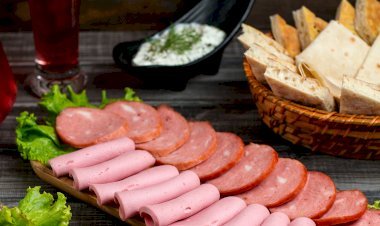

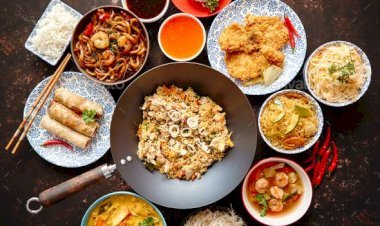



![AutoZone Business Hours [2025]: Complete Guide to Store Times, Holidays & Tips](https://statesidemagazine.com/uploads/images/2025/06/image_140x98_6852d31a1eb7b.jpg)





